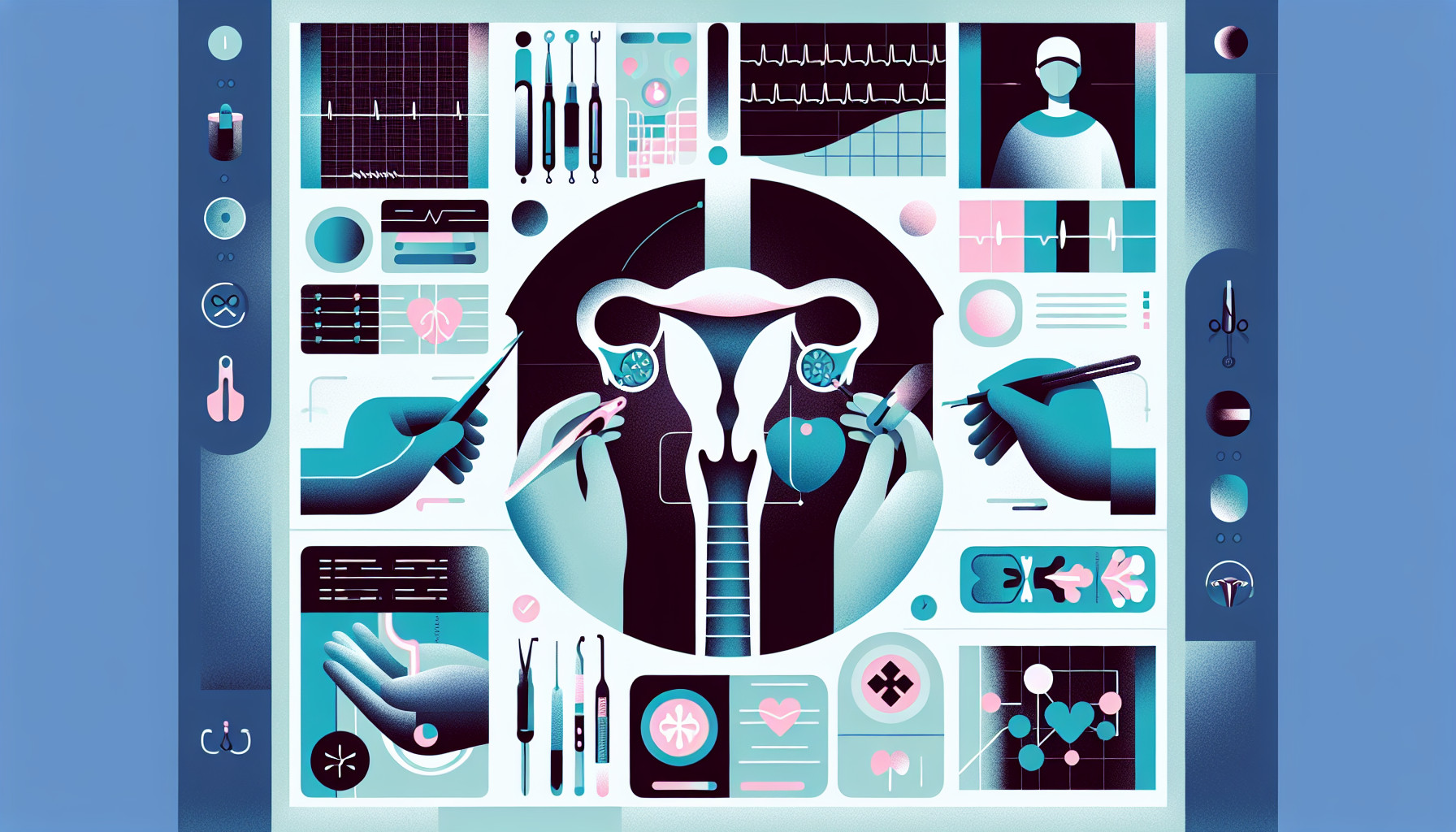Our Summary
This research study looked at the risk factors for damage to the endometrium (the lining of the uterus) immediately after, and three months after, a specific treatment for uterine fibroids. The treatment involved is called magnetic resonance-guided focused ultrasound (MRgFUS) ablation.
The study involved 66 patients who had uterine fibroids and underwent the MRgFUS treatment. The researchers collected data on the patients and compared those who had damage to the endometrium and those who did not.
They found that a system for classifying the severity of gynecological diseases (known as the FIGO classification) was linked to the risk of damage to the endometrium. This remained the case even when they took into account other potential risk factors such as age, the size of the fibroid before treatment, whether there was more than one fibroid, the intensity of the ultrasound used, and the length of the treatment.
In simple terms, the study found that the severity of the disease as classified by the FIGO system was a significant indicator of the risk of endometrial injury after MRgFUS treatment for uterine fibroids. They also found that most patients recovered to some extent after 3 months.
FAQs
- What is magnetic resonance-guided focused ultrasound (MRgFUS) ablation?
- What factors were found to be linked to the risk of endometrial damage after MRgFUS treatment?
- What is the FIGO classification system and how does it relate to the risk of endometrial injury in patients undergoing MRgFUS treatment for uterine fibroids?
Doctor’s Tip
One helpful tip a doctor might give a patient about endometrial ablation is to discuss any potential risk factors for damage to the endometrium with their healthcare provider before undergoing the procedure. This can help in determining the best course of treatment and managing any potential complications. It is also important to follow post-procedure care instructions carefully and attend follow-up appointments to monitor recovery progress.
Suitable For
Patients who are typically recommended endometrial ablation are those who have heavy menstrual bleeding that has not responded to other treatments such as medication or hormonal therapy. Other factors that may make a patient a candidate for endometrial ablation include:
- Women who have completed their family planning and do not want to have children in the future
- Women who have abnormal uterine bleeding or irregular periods
- Women who have a thickened endometrium (the lining of the uterus)
- Women who have benign conditions such as uterine fibroids or polyps that are causing abnormal bleeding
- Women who are unable to undergo a hysterectomy (surgical removal of the uterus) due to medical reasons
It is important for patients to discuss their individual circumstances and medical history with their healthcare provider to determine if endometrial ablation is the right treatment option for them.
Timeline
Before the endometrial ablation, a patient may experience symptoms such as heavy menstrual bleeding, pelvic pain, and pressure. They may have tried other treatments such as medication or hormone therapy without success.
After the endometrial ablation, the patient may experience some cramping and discomfort for a few days. They may also have some light vaginal bleeding or discharge. Over time, they should notice a significant reduction in menstrual bleeding and other symptoms related to their uterine fibroids.
Overall, the goal of endometrial ablation is to reduce or eliminate heavy menstrual bleeding and improve quality of life for the patient. It is important for patients to follow up with their healthcare provider for any ongoing symptoms or concerns after the procedure.
What to Ask Your Doctor
- What is endometrial ablation and how does it work?
- What are the potential risks and side effects of endometrial ablation?
- How likely is it that endometrial ablation will affect my fertility?
- Will I still have periods after endometrial ablation?
- How long does it typically take to recover from endometrial ablation?
- Are there any specific lifestyle changes or restrictions I should follow after the procedure?
- What are the chances of the endometrial lining growing back after ablation?
- How often do patients experience complications or the need for repeat procedures after endometrial ablation?
- Are there any factors that may increase my risk of complications from endometrial ablation?
- What alternative treatments are available for my condition, and how do they compare to endometrial ablation in terms of effectiveness and risks?
Reference
Authors: Ye JT, Shi HF, Su BY, Zhou K, Su M, Zhang Y, Zhang GF, Jin ZY. Journal: Zhongguo Yi Xue Ke Xue Yuan Xue Bao. 2021 Jun 30;43(3):414-420. doi: 10.3881/j.issn.1000-503X.13839. PMID: 34238418
